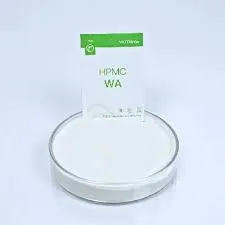
Novemba . 24, 2024 21:07 Back to list
HPMC Safety Guidelines for Safe Use in Pharmaceutical Applications
Understanding HPMC Safety in Pharmaceutical Applications
Hydroxypropyl Methylcellulose (HPMC) is a widely used pharmaceutical excipient known for its unique properties that enhance the effectiveness and stability of various formulations. It serves as a thickening agent, film-forming agent, stabilizer, and controlled-release polymer. As its applications range from tablets and creams to ophthalmic solutions, ensuring the safety of HPMC in pharmaceutical products is paramount.
What is HPMC?
HPMC is a non-ionic, water-soluble polymer derived from cellulose. Its chemical structure involves the modification of cellulose with hydroxypropyl and methyl groups, which enhance its solubility and functional properties. Because of its versatile nature, HPMC is considered a safe excipient for pharmaceutical formulations, providing improved texture, stability, and bioavailability.
Safety Profile of HPMC
The safety of HPMC has been established through extensive research and regulatory evaluations. Regulatory bodies, including the FDA and the European Medicines Agency (EMA), have recognized HPMC as a generally recognized as safe (GRAS) substance. Studies indicate that HPMC demonstrates low toxicity and is well-tolerated in both animal and human studies. Even at high concentrations, HPMC does not exhibit mutagenic or carcinogenic properties.
Evaluation of HPMC in Different Formulations
Research has consistently shown that HPMC can be safely used in various dosage forms. For solid dosage forms such as tablets, HPMC functions as a binder and release modifier. When used in controlled-release formulations, it allows for a prolonged therapeutic effect by regulating the release rate of the active pharmaceutical ingredient (API). This capability not only enhances patient compliance but also minimizes the risk of dose dumping, which can lead to adverse effects.
hpmc safety

In topical formulations like creams and gels, HPMC provides a smooth texture and aids in the retention of moisture, enhancing skin hydration without causing irritation. Its film-forming properties help in protecting the skin barrier, making it a suitable choice for formulations aimed at delivering active ingredients to the skin.
Potential Concerns and Mitigation Strategies
Despite its safety, there are some considerations regarding HPMC use. The quality of HPMC can vary significantly, depending on the manufacturing process and source. Impurities or contaminants in HPMC can pose risks in pharmaceutical applications. Therefore, it is crucial for manufacturers to source HPMC from reputable suppliers who comply with Good Manufacturing Practices (GMP) and conduct rigorous quality control.
Moreover, while HPMC is generally safe, individual sensitivities may occur. Patients with specific allergies or sensitivities should be carefully monitored when using formulations containing HPMC. Comprehensive labeling and patient education can help mitigate these risks.
Conclusion
HPMC has carved a significant niche in the pharmaceutical industry due to its safety, functionality, and versatility. Its widespread acceptance and regulatory approval highlight the confidence the industry places in this excipient for creating effective and patient-friendly formulations.
Ongoing research and advancements in manufacturing techniques continue to enhance the safety and efficacy of HPMC in various applications. By adhering to established safety guidelines and ensuring high-quality standards, pharmaceutical companies can harness the benefits of HPMC while prioritizing patient safety. Thus, HPMC stands as a testament to the successful merger of innovation and safety in the realm of pharmaceuticals, promoting better health outcomes and enhancing the quality of life for patients around the globe.
In conclusion, while HPMC is considered safe and effective, vigilance in its application and continued research are essential to maintain its reputation as a reliable excipient in the pharmaceutical industry.
-
Versatile Hpmc Uses in Different Industries
NewsJun.19,2025
-
Redispersible Powder's Role in Enhancing Durability of Construction Products
NewsJun.19,2025
-
Hydroxyethyl Cellulose Applications Driving Green Industrial Processes
NewsJun.19,2025
-
Exploring Different Redispersible Polymer Powder
NewsJun.19,2025
-
Choosing the Right Mortar Bonding Agent
NewsJun.19,2025
-
Applications and Significance of China Hpmc in Modern Industries
NewsJun.19,2025







